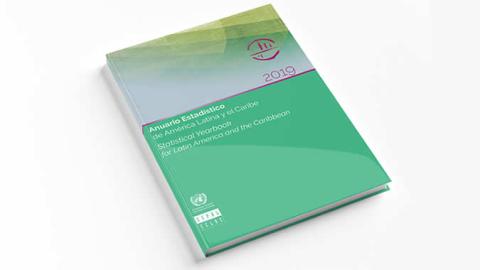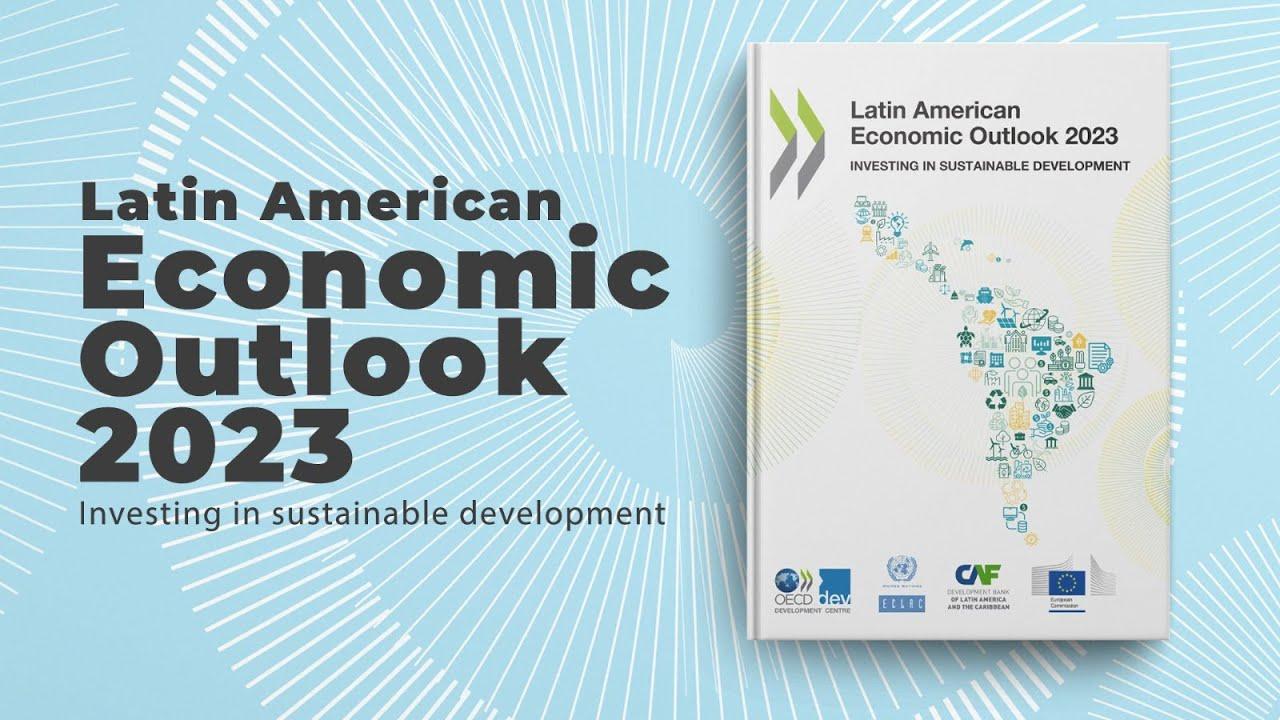Press Release
A statistical overview of the sociodemographic, economic and environmental development of the region’s countries is presented in the Statistical Yearbook for Latin America and the Caribbean 2023, an annual report by the Economic Commission for Latin America and the Caribbean (ECLAC) that was released today.
This publication, which is among the United Nations regional organization’s most important, serves as a reference for those seeking descriptive statistical data that is comparable between countries and over time. The current edition contains information available as of mid-December 2023.
The Statistical Yearbook 2023 is divided into three chapters. The first explores demographic and social aspects, including indicators on population, work, education, health, housing and basic services, poverty and income distribution, and gender.
In the social arena, the report emphasizes that the percentage of people living in poverty declined in 2022 to pre-pandemic levels, reaching 29.0%. For the first time, this year’s edition includes information on the poverty situation at the level of the largest administrative division (country subdivision), which enables a comparative regional perspective on how the lack of income is manifested geographically.
The most recent figures show that household size is continually decreasing. Households had 3.4 people on average as of 2022, while in 2010 the figure was 3.9 people, with significant gaps remaining between socioeconomic groups: the households in the lowest-income quintile have 1.7 people more than the households in the highest-income quintile. The makeup of households has also changed notably in the last 12 years, with growth in one-person households and couples without children and a decline in extended households.
Attendance at tertiary educational establishments shows great heterogeneity between socioeconomic groups and areas. In urban areas, while 52.9% of the population aged 20 to 24 from the wealthiest quintile participates in the higher education process, only 26.7% of the poorest quintile is in a similar situation. These percentages drop to 28.5% and 15.4%, respectively, in rural areas.
The second chapter presents economic information referring to national accounts, balance of payments, foreign trade and price indices, among other indicators.
The Yearbook states that in 2023, the region’s economies saw their Gross Domestic Product growth rate decelerate to an estimated 2.2% from 4% the year before. Although all the subregions experienced lower growth in 2023 versus 2022, there is notable heterogeneity between countries. South America grew by 1.5% (3.8% in 2022), the group made up of Central America and Mexico by 3.5% (4.1% in 2022), and the Caribbean (without including Guyana) expanded by 3.4% (6.4% in 2022).
In addition to the complex domestic scenario in the region, the external sector is currently unfavorable. In 2022, Latin America and the Caribbean had a current account deficit in its balance of payments of 2.7% of GDP, with a deterioration in the region’s overall trade balance, affected by 22.7% growth in goods and services imports, which exceeded the 19.7% expansion in its exports.
The third chapter offers environmental statistics from the region. These include metrics on physical conditions; land cover; ecosystems; biodiversity; energy, water and biological resources; emissions; environmental quality; climate change; and extreme events and disasters.
Latin America and the Caribbean is a region that is highly vulnerable to the negative consequences of climate change: floods, storms, drought and landslides, among others. In the 2016-2023 period, 90 dangerous events and disasters took place, directly affecting more than 52.8 million people and killing 5,600 people. The value of all the damage and economic losses related to disasters, directly or indirectly, rose to $123 billion dollars.
The region is home to 23% of the world’s forests, but forest area and natural forests in particular have shrunk in the last 30 years. Between 1990 and 2020, the proportion of regional forest cover has decreased systematically from 53% to 46% of the territory (from 1.07 billion hectares to 932 million hectares). In this same period, the loss of land area covered by forests throughout the region totaled 138 million hectares.
The Statistical Yearbook is published in a print version and an online format that include a selection of tables and graphs aimed at providing a summary of the statistical information from a regional perspective. The interactive web version facilitates navigation and access to the information presented in the print version, linking graphs and statistical tables to the data series available in ECLAC’s databases, which allows for accessing information that is more detailed and refers to a much broader historical period. It also contains an additional chapter explaining methodological aspects and specifying the references to the data sources used.
The information underpinning the Yearbook is part of the set of statistics available on CEPALSTAT, a platform that gives access to all the updated statistical information from the region’s countries that is collected, systematized and published by ECLAC, enabling visualization of the region’s statistics in distinct territories through its Geoportal.
Given that most of this information comes from national statistical offices, central banks, international bodies and other official institutions, ECLAC invites users to pay attention to the sources and the technical notes presented in this publication. The data is obtained using international methodologies and standards with the aim of ensuring the greatest possible comparability between countries, which means that these figures may not necessarily coincide with national data.



